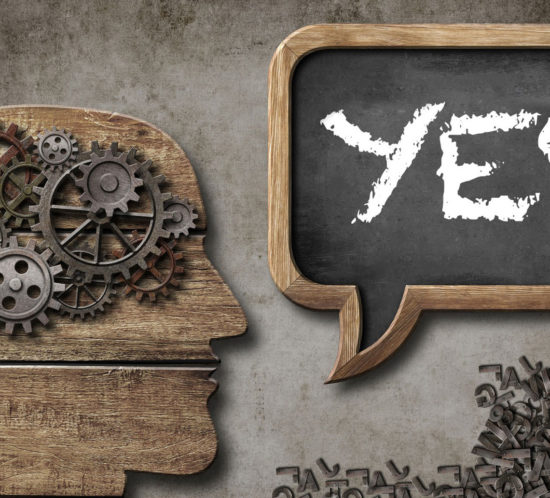Emotional Triggers: The Psychology of Yes
The most successful people in the world are those who can get things done with and through others. By applying new scientific breakthroughs, it’s easier than ever to get “Yes!” decisions and actions.
Getting others to act on our ideas, proposals, solutions and offers is what business is all about. Even the most solitary professions eventually have to rely on engagement and support from others if success in the wider world is to be achieved. Marketers, salespeople, and entrepreneurs rely even more on the ability to get attention, engagement, and decision. If we hope to become more successful at influencing others’ decisions, it stands to reason that we might start with a deeper understanding of the human decision process in the first place. Easiest place to start? How about a brief look at our own decisions…
Life’s Challenges
Let’s face it, life is a challenge. But it would be worse – much worse – if it weren’t for the role the emotional brain plays in making our lives less chaotic.
Consider this: Every day is an avalanche of decisions. Get out of bed now or snooze? What to wear? What for breakfast – stick to the diet or enjoy? Which route to work? Stop for gas now or on the way home? Listen to the news or some new music? Which music? At work, it’s the same. Get that report out first or answer the emails and voicemail? Take a call or let voicemail pick up? What are the boss’s priorities? What are yours? Whose do you execute first?
All-day long, requests and decisions drive activities. The need to decide is incessant; the issues never stop, never let up.
Dealing with this many decisions sounds difficult. It could be. If we had to use logic, reason, and cognitive thinking – if we had to rationally evaluate and think through each decision – we’d be trapped, locked in place, unable to move in any direction as we analyze, evaluate, contemplate, measure, and critique the options. We’d wind up dazed and immobile.
The Natural Psychology of Yes
Fortunately, nature – by way of our brain’s limbic system – has provided us with a highly effective, simple solution to easily get through so many decision-making moments. This system resides in the most primal area of the brain, and is activated by our own personal databank of internal “triggers.”
The take-away summary from recent brain research focused on this “emotional center” is this:
What is An Emotional Trigger?
We are not thinking machines. We are feeling machines that think.
What is a an emotional trigger? What is this powerful internal navigation tool that initiates quicker, easier decisions? A trigger is an emotion-based, “gut-feeling” shortcut that helps us avoid the pain of rational thinking, of laborious cognitive mental analysis. We are pre-programmed to comply with offers, opportunities, and requests when those request activate the appropriate triggers.
The secret for persuasion success is to determine which triggers can be activated for each situation. The odd irony of this need for quick, easy, emotion-based decisions is that the more sophisticated and complex our lives get, the more information we have, the more we need and rely on simple ways to help us make those decisions. The smart entrepreneur, executive, or sales rep understands this need and communicates their style of influence accordingly.
The exciting science of live brain imaging reveals that one emotion-based brain component, the amygdala, is the first to receive most outside stimuli – requests for decisions. The amygdala has two choices. It can make an immediate emotion based decision tapping into the life long database we build. Or, if no prior emotion is triggered it can send the request to the pre-frontal cortex for lengthy, rational, time consuming cognitive evaluation. Here’s a newly discovered scientific fact: Reason and logic do not persuade. They might back up an emotional decision, but they do not heavily influence the decision.
To get what you want through others you must activate their emotional triggers.
How Exactly Do You Activate an Emotional Trigger?
Triggers are activated when communication engages the emotional brain faster, easier, or more strongly than it does the analytical brain. Triggers remain dormant when communication gets “stuck” in the pre-frontal cortex, in the “brain pain” of analysis. Persuasive communication makes a beeline for the limbic system, where the amygdala can drive perceptions and decisions with such irresistible force as to be completely oblivious to facts or evidence.
Of course, it’s ideal if facts and evidence also support your “triggerized,” persuasive messaging. But if all you have is facts and evidence alone, your likelihood of being persuasive will be extremely small.
Although persuasive communication can function in every mode or dimension of message transfer – across all five senses and through the elements of every media channel (e.g. words, symbols, pictures, audio, etc.) – a lot of persuasion can be accomplished through essentially two aspects of written or verbal communication: what we say and how we say it. A simple way to think about this is activating triggers by either topic (the content of our communication) or tactic (the style of our communication or the words we choose).
Understanding what the triggers are and why they work is like getting the essential strategic guidelines for persuasive communication. But then it takes some practice to fill in all the tactical details to really make it work. Here’s a classic example of a tactical (versus topical) persuasive communication solution, a brief video we often use in our learning programs as an especially compelling example of “words matter” when it comes to persuasion:
[social_warfare]





